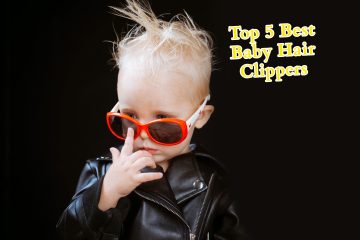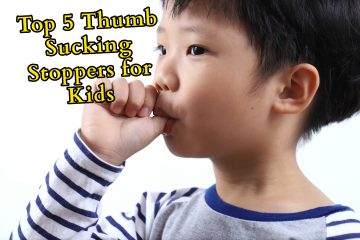DISCLAIMER: We earn a commission on some purchases you make through our site. Here's how affiliate links work.
Camping with a baby might sound intimidating, but with the right preparation and gear, it can turn into one of the most rewarding family experiences. Fresh air, bonding time, and the joy of introducing your little one to nature are priceless. Still, to make your trip smooth and stress-free, you’ll need to know the must haves for camping with an infant.
This comprehensive guide covers everything — from essential baby gear, safety tips, feeding tools, and sleep solutions, to comfort hacks and parent-tested tricks. Whether you’re a first-time parent or a seasoned camper adding a newborn to your adventures, this article will help you feel prepared and confident.
1. Why Camping with an Infant Is Possible (and Worth It)
Many new parents wonder if it’s even realistic to camp with a baby. The truth is, infants adapt more easily than you think. Unlike toddlers, they aren’t running around yet, and their needs are fairly straightforward: food, sleep, cleanliness, and comfort.
Camping with your infant allows you to:
- Spend quality family time away from screens and routines.
- Introduce your baby to nature early, which studies show can help with development.
- Build confidence as parents by mastering new challenges.
The key is being well-prepared with the right gear — and that’s exactly what we’ll cover in this guide.
2. Choosing the Right Campsite for Your Baby
Before you even pack, think about where you’ll camp. The location matters as much as the gear.
Key factors when selecting a campsite with an infant:
- Accessibility: Pick a site close to your car so you can load and unload baby gear easily.
- Facilities: Bathrooms, clean water access, and shaded areas are lifesavers.
- Weather: Avoid extreme hot or cold temperatures since babies regulate body heat differently.
- Noise level: A quiet site helps your infant nap better.
Pro tip: For your first trip, try a family-friendly campground rather than remote backcountry camping. Once you gain experience, you can branch out to more adventurous spots.
3. Infant-Friendly Sleeping Arrangements
Sleep is the biggest concern parents have when camping with babies. Your goal is to make the outdoors feel as safe and cozy as home.
Must-have sleep gear for infants:
- Portable crib or bassinet: Travel cribs with breathable mesh sides work great.
- Baby sleeping bag or sleep sack: Keeps your baby warm without the risks of loose blankets.
- Foam sleeping pad or crib mattress: Provides insulation from the cold ground.
- White noise machine (battery-operated): Helps mask campground sounds and keeps baby calm.
Always remember: stick to safe sleep guidelines outdoors just as you would at home — flat, firm surfaces and no loose bedding.
4. Feeding Essentials for Camping with a Baby
Whether you’re breastfeeding, formula-feeding, or starting solids, feeding a baby outdoors requires planning.
Breastfeeding moms may need:
- A nursing cover for privacy and sun protection.
- A comfortable camp chair with good back support.
- Hydration gear (you’ll need extra water).
Formula-feeding parents will need:
- A portable bottle warmer or insulated thermos with hot water.
- Pre-measured formula containers for quick mixing.
- Plenty of sterilized bottles (or a way to wash and sterilize on-site).
For solid-food eaters:
- Baby-friendly snacks in resealable pouches.
- A spill-proof highchair or booster seat for mealtimes.
- Silicone bibs for easy cleanup.
Pro tip: Bring more food and water than you think you’ll need — camping with infants often takes longer, and extra supplies are a lifesaver.
5. Diapering and Hygiene Must-Haves
Changing diapers in the great outdoors? Totally doable, as long as you’re prepared.
Diapering essentials include:
- Portable changing pad: Keeps baby clean anywhere.
- Plenty of diapers (pack more than you expect).
- Biodegradable baby wipes: Gentle and eco-friendly.
- Diaper cream to prevent rashes in humid or damp conditions.
- Wet/dry bag for dirty clothes and used diapers.
- Diaper disposal system (seal-tight bags or a bucket with a lid).
If you’re using cloth diapers, bring wet bags and a washing plan — though disposables may be simpler for short trips.
6. Weather-Appropriate Baby Clothing
Babies can’t regulate body temperature like adults, so layering is key.
Clothing checklist for camping with an infant:
- Base layers: Cotton or merino wool onesies.
- Mid-layers: Fleece or lightweight sweaters.
- Outer layers: Rain jackets or insulated coats depending on season.
- Hats: Sun hats for daytime, beanies for chilly nights.
- Baby booties or socks: Keep those tiny toes warm.
- Baby mittens: Prevent scratches and add warmth.
Tip: Always pack at least two extra outfits per day. Babies get messy fast.
7. Baby Carriers and Strollers for Camping
How will you transport your baby around camp or on trails?
- Baby carrier: A structured carrier or wrap lets you keep your baby close while freeing your hands. Great for short hikes and around the campsite.
- All-terrain stroller: Perfect for smoother trails or if your campsite has pathways. Look for large wheels and suspension.
- Backpack carrier (for older infants): Good for longer hikes once your baby has strong head control.
Carriers are often the best option since they keep your baby snug and let you move freely.
8. Safety Gear and First Aid Essentials
Safety comes first when camping with a baby. A few extra tools will give you peace of mind.
Must-have safety items include:
- Baby monitor (battery or solar-powered) to keep tabs while baby naps.
- First aid kit with baby-safe supplies (infant Tylenol, teething gel, thermometer).
- Sunscreen and insect repellent formulated for babies (or use protective clothing if under 6 months).
- Baby-friendly bug net for strollers and cribs.
- Flashlight or headlamp for middle-of-the-night checks.
9. Entertainment and Comfort for Baby
Even infants need a little stimulation outdoors.
- Soft toys or rattles: Keep them occupied during downtime.
- Teething rings: Helpful for fussy moments.
- Play mat or ground blanket: A clean, safe spot for tummy time.
- Books or lullabies: Familiar comfort at bedtime.
Remember: The outdoors itself is entertaining for babies. The sounds of birds, rustling leaves, and natural light provide plenty of sensory input.
10. Tips for Parents: Making the Trip Easier
Camping with an infant isn’t just about the gear — it’s about mindset.
- Do a trial run at home: Set up the tent in your backyard to practice sleep routines.
- Stick to familiar routines: Babies thrive on consistency, so keep naps and feeding times as close to normal as possible.
- Pack smart: Use clear bins or packing cubes to separate baby items from general camping gear.
- Take breaks: Don’t over-schedule activities — allow downtime for naps and feedings.
- Stay flexible: Some things won’t go as planned, and that’s okay.
11. Packing Checklist for Infant Camping
Here’s a quick master checklist to make sure you don’t forget anything:
- Sleeping gear: Travel crib, sleep sack, mattress, white noise machine.
- Feeding supplies: Bottles, formula, nursing cover, baby food, bibs.
- Diapering kit: Diapers, wipes, changing pad, wet bags.
- Clothing: Layers, hats, socks, mittens.
- Transport: Carrier, stroller, backpack.
- Safety kit: First aid, sunscreen, bug net, flashlight.
- Comfort items: Toys, blankets, play mat.
Conclusion
Camping with an infant may require extra planning, but it’s absolutely possible — and deeply rewarding. With the right must-have items, you’ll be able to meet your baby’s needs for sleep, food, comfort, and safety while enjoying the beauty of the outdoors.
By choosing the right campsite, packing strategically, and maintaining a flexible mindset, you’ll set the stage for a smooth, memorable adventure. Remember, your little one won’t remember these early trips — but you will treasure the experience of sharing nature with them from the very beginning.
Camping with your baby is less about perfection and more about connection. Pack wisely, prepare well, and enjoy the journey.



0 Comments